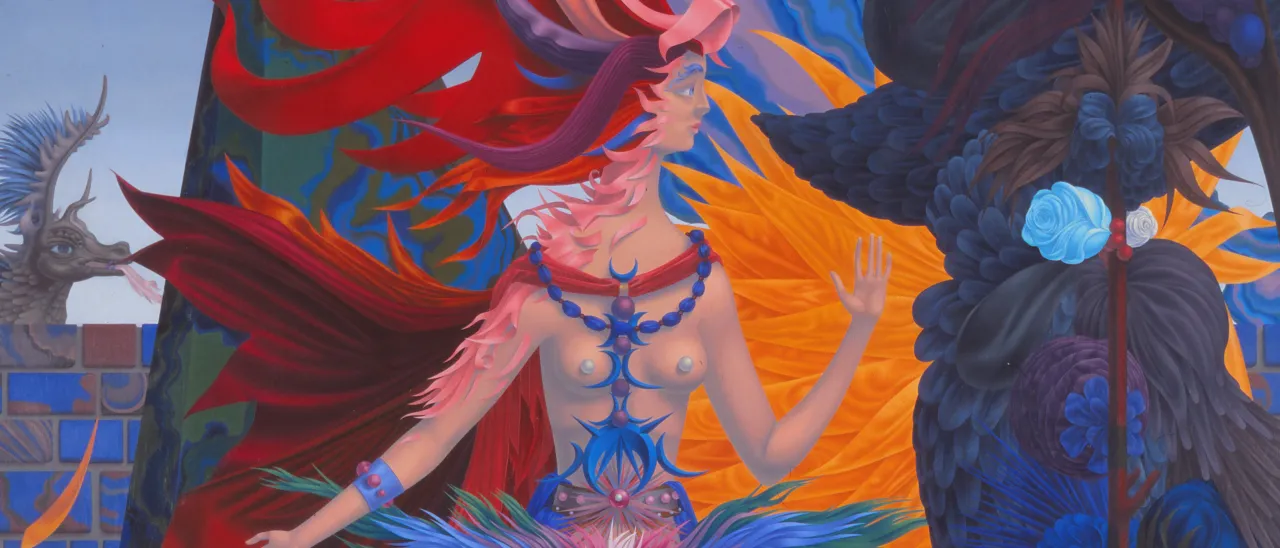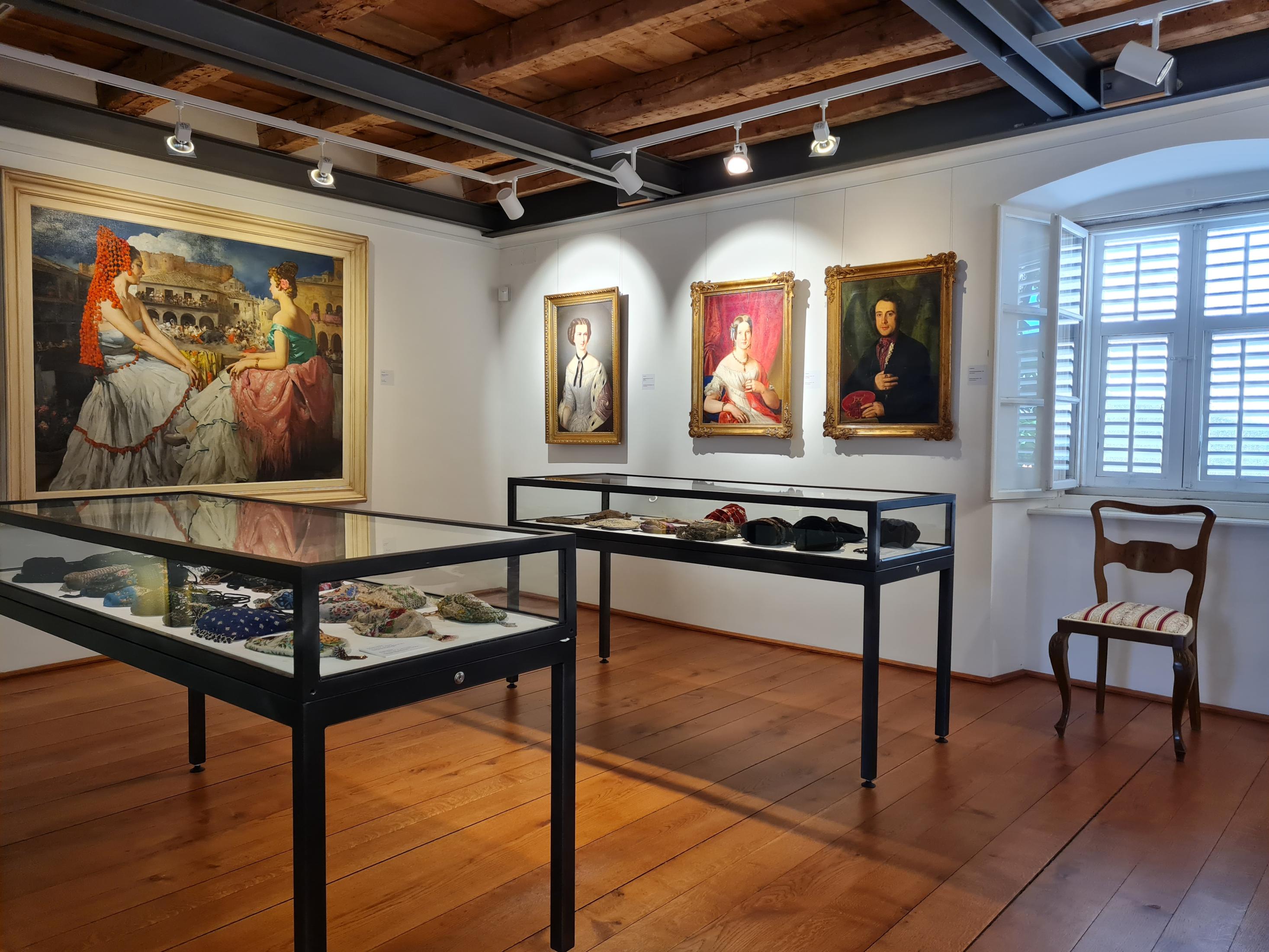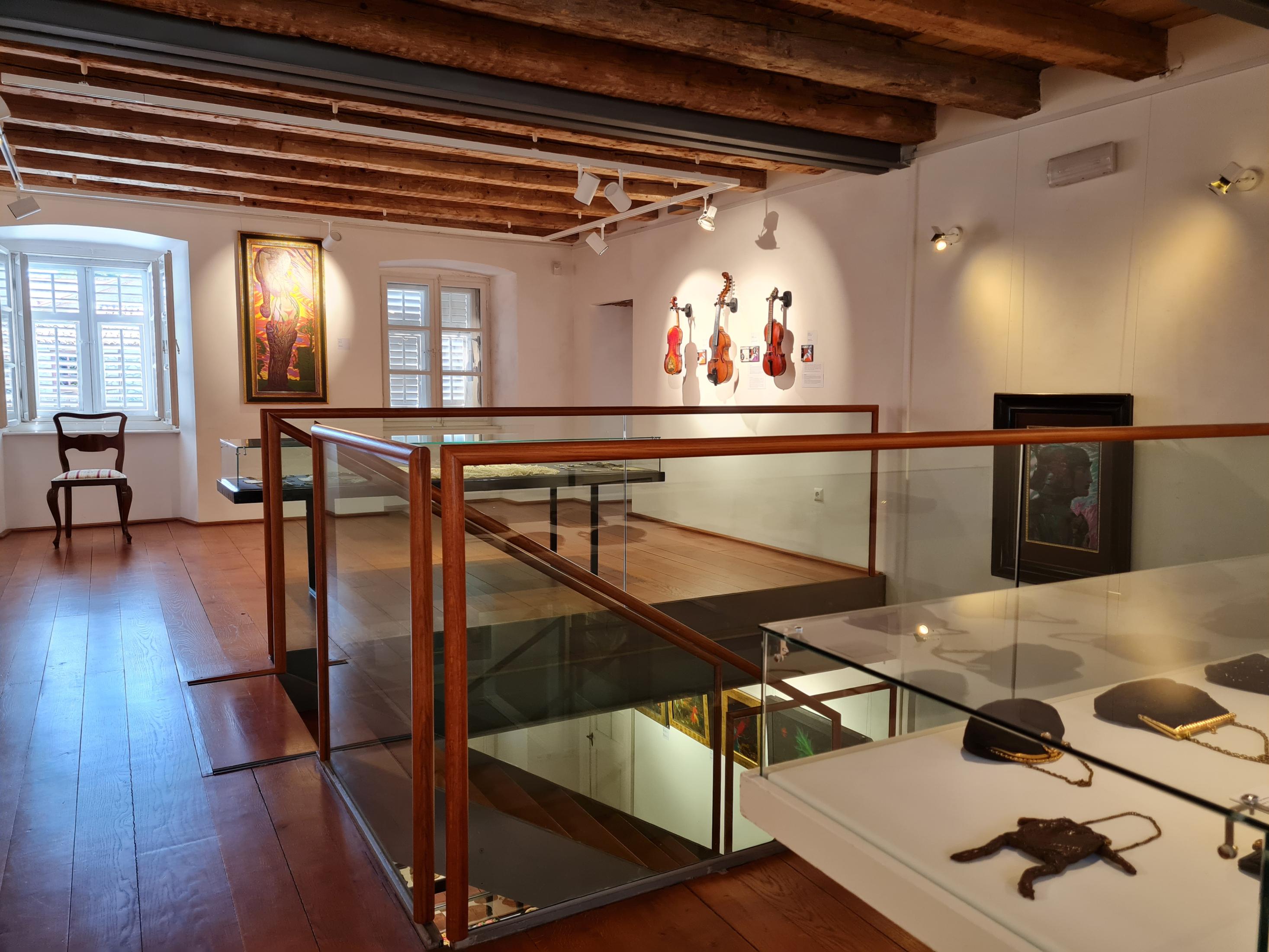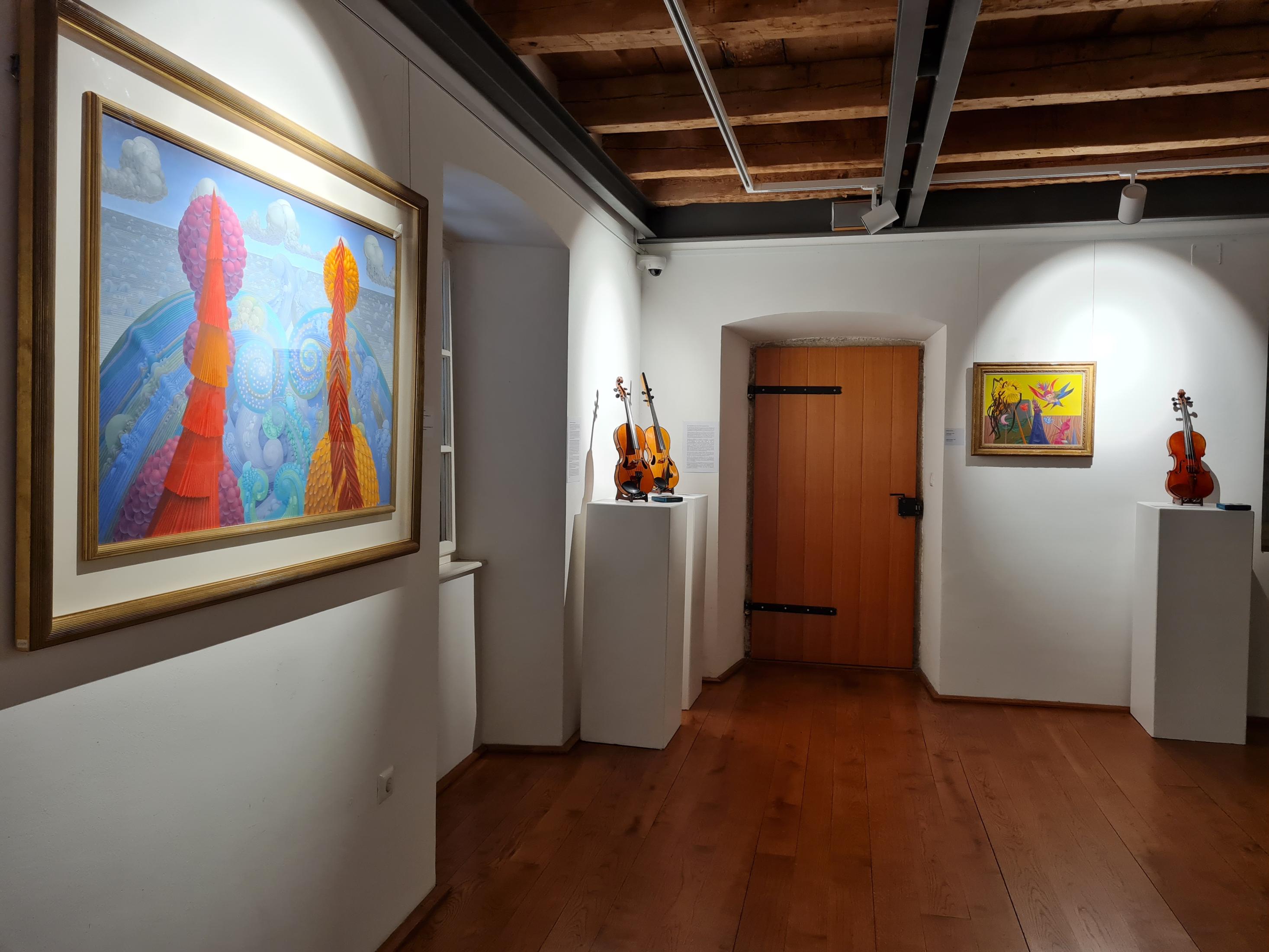
HIGHLIGHTS
In 2021 the Infeld Cultural Center in Dobrinj, Croatia will celebrate its 20th anniversary. The “Highlights” exhibition reflects the diversity of the Infeld Collection with three main focuses: Fine arts, musical instruments, historical bags and purses.
Visual arts
The Viennese School of Fantastic Realism stands at the beginning of the Infeld Collection. In 1965, after an exhibition of the artists' group, Peter Infeld remembers: "I felt the need to collect these painters, to get to know them personally. I liked the meticulous style of painting, going back to old-master techniques, and dealing with psychoanalysis. From the very beginning a cordial relationship developed with the painters, with the people who steadfastly continued on the path they had chosen. I wanted to give the artists security in their quality. Wherever the painter goes, I will follow. "
Peter Infeld remained on friendly terms with Rudolf Hausner, Ernst Fuchs, Anton Lehmden, Arik Brauer, Wolfgang Hutter, and many of their master students for decades. He always selected the works of art out of personal sensitivity for the artists and their way and method of creating. This conception of the collecting activity results in a very personal affinity and emotional relationship with each individual work of art.
Musical instruments
The violin developed into the instrument as we know it today in the 16th century. Violin makers from Italy such as Amati, Stradivari and Guarneri had a great influence on its construction. They defined the standard that was later only changed in some of the detail.
Dr. Franz Thomastik (1883-1951) considered three elements to be central to the balanced sound of a stringed instrument: the musician, the instrument and the string. As a violin maker, the activation of the internal air volume of the body and the harmonious coordination of all vibrating parts was important to him. He experimented consistently and radically with the body and its shape and type of wood as well as with parts of the instrument such as the bridge, fingerboard and tailpiece.
Franz Thomastik founded the string company Thomastik-Infeld in Vienna in 1919 with the engineer Otto Infeld. More than 100 years later, the string technology and the sound of the strings are constantly being refined.
Instruments by Franz Thomastik and Nestor Audinot, both strung with Thomastik-Infeld strings, can be tested during the exhibition. A viola d‘amore and a table violin - two instruments related to the violin - complete the presentation.
Historical bags and purses
Clothing is part of history and subject to constant change. Originally, clothes did not have pockets. Up until the Renaissance, men and women carried bags or purses to hold their valuables and coins. For merchants, these were a status symbol.
Trouser pockets were invented in the 18th century. After the French Revolution in 1789, straight-cut dresses replaced voluminous skirts. The small "treasure bags" became visible and transformed into the ladies' accessory we know today. In the first half of the 19th century - the Biedermeier period - the pearl pouch was widespread in Central Europe. The shape was based on the flowered cloth bag of the Marquise de Pompadour (1721-1764).
The pearl pouches and the petit point embroidery are a highlight of the exhibition. This centuries-old art was promoted by the pronounced Viennese court life under Maria Theresa (1717-1780). The empress's floral designs are still in use. Petit point embroidery is considered a Viennese cultural asset and remains an arts and crafts specialty.
With increasing mobility at the beginning of the 20th century, traveling by rail and car was important for stability and functionality. Handbags, however, did not remain a commodity. They advanced to become a fashionable cult object. The radical change is visible through the models on display.




